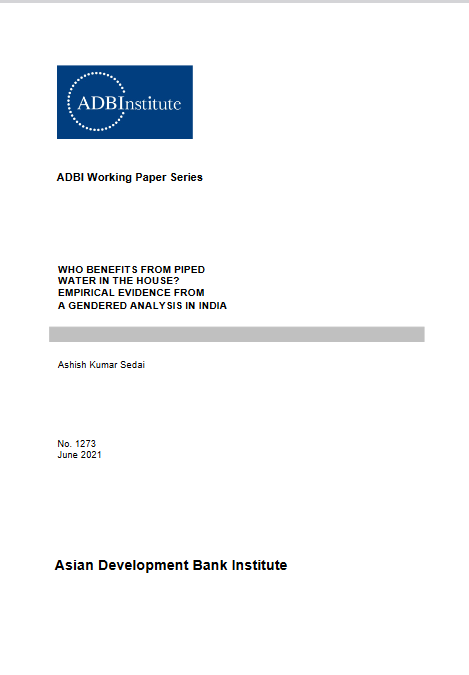Who Benefits from Piped Water in the House? Empirical Evidence from a Gendered Analysis in India
 |
article Jun 2021 ; 30 pages
Aut.
Ed. ADB - Manila
Téléchargeable sous format: PdF
Téléchargeable chez l'éditeur
Page de présentation d'un éditeur
Abstract:
The disproportionate burden of water collection, maintenance, and service for women in developing economies calls for a juxtaposition of water infrastructure and gender differences at the household level. We use spatiotemporal data from the largest gender disaggregated human development survey in India (2005–2012) and carry out econometric analyses using individual fixed effects, conditionally exogenous village fixed effects, and instrumental variable regressions to study the effect of indoor piped drinking water (IPDW) on employment and earnings by gender, the self-reported health of women, the prevalence of diarrhea, and children’s absence from school.
Among others, the results show that a 0.1% increase in village access to IPDW increases the likelihood of women’s overall employment by 0.33 percentage points and women’s wage/salary employment by 0.39 percentage points, comparatively more than for men. Women’s earnings with IPDW increase by 9.9%, their health improves, and children’s health and education outcomes improve.
Our study recommends evaluating the social demand curve for a piped water supply and/or the consideration of a piped water supply as a right as part of a broader strategy to reduce gender differences.
Mots clefs: |
genre (CI) (DT) (OP) , service public de l'eau (CI) (DT) (OP) |
Editeur/Diffuseur: |
|
ADB
-
Asian Development Bank - Manila - Philippines |
En cas de lien brisé, nous le mentionner à communication@pseau.org